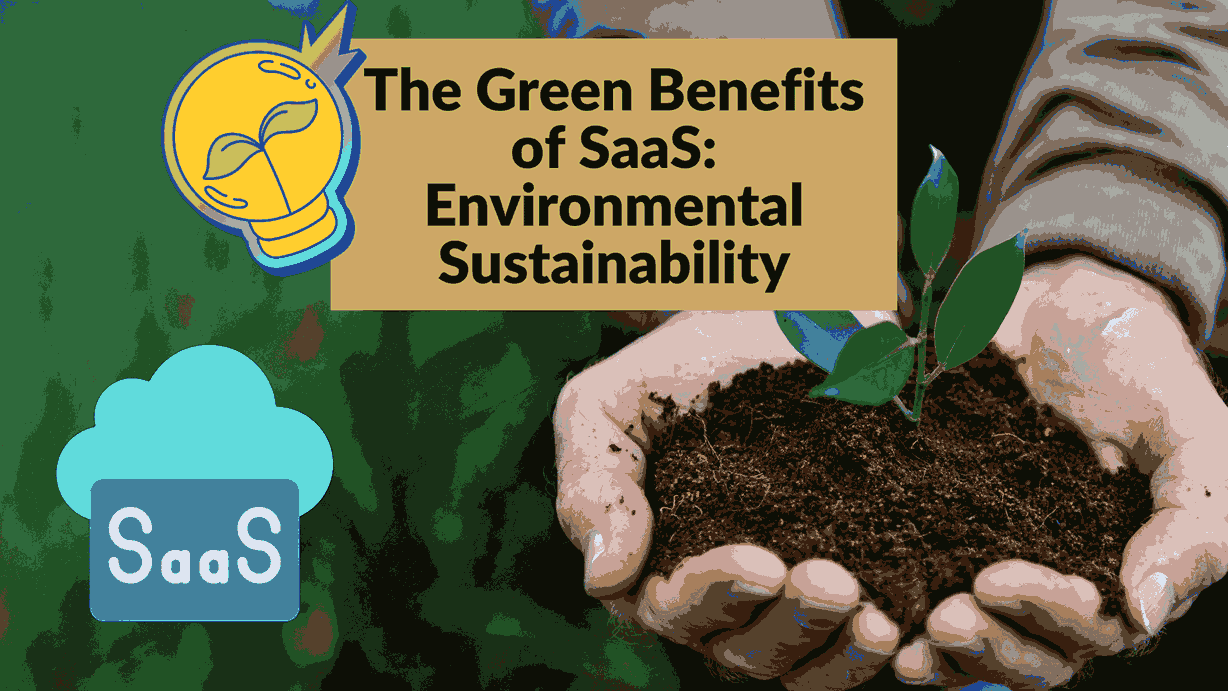The Green Benefits of SaaS: Environmental Sustainability
- AI Image Generators Software AI Writing Assistant Popular Tools AI Tools


The Environmental Impact of SaaS Adoption
The modern business landscape is increasingly turning to Software as a Service (SaaS) as the go-to solution for a wide range of operational needs. With its cost-effective and scalable nature, SaaS has become a game-changer for businesses of all sizes. However, beyond its economic advantages, SaaS adoption holds a key to environmental benefits that are worth exploring.
As outlined in a detailed study by iTiLite, SaaS plays a vital role in reducing the environmental impact of modern businesses. They emphasize the importance of eco-friendly travel solutions, showcasing how SaaS can contribute to sustainable travel practices.
Energy Efficiency in SaaS Data Centers
Traditional data centers have long been acknowledged as energy hogs since they are frequently utilized to host on-premises software applications. Massive amounts of electricity are used by these data behemoths to run and cool servers. SaaS providers, on the other hand, have led the charge in putting energy-saving techniques into place in their data centers.
As explored in an insightful article by Amdocs, SaaS is the green answer to digital transformation. The article highlights how SaaS providers are taking steps to reduce their carbon footprint, emphasizing the significance of sustainable digital practices.
They drastically lower energy consumption by pooling resources and maximizing server use. Some forward-thinking SaaS businesses even make investments in renewable energy sources to further increase the sustainability of their operations.
Reducing Hardware Waste and E-Waste
Each company relies on a complicated web of on-premises hardware, from servers to storage devices, in a traditional software configuration. When these parts age out, they add to the rising issue of electronic waste (or “e-waste”).
In a comprehensive guide shared by Intralinks, the focus is on green business goals and the environmental impact of SaaS adoption. The guide underlines the reduction of hardware waste as a key benefit of adopting SaaS, thus aligning with global efforts to reduce e-waste.
Adoption of SaaS significantly reduces the requirement for expensive on-site hardware. Businesses can decrease their hardware footprint with software provided over the cloud, extending the life of current devices and reducing e-waste. This change is consistent with efforts being made around the world to lessen the environmental effect of electronic devices.
The Role of Cloud Computing and Virtualization
SaaS mainly relies on virtualization and cloud computing, both of which have an impact on the environment.
By using cloud computing, businesses are less likely to need to operate large server farms that are frequently located in environmentally sensitive places. As discussed in an article by Alekos Creates, virtualization technology helps allocate resources efficiently and ensures that servers operate at full capacity.
Cloud-based SaaS solutions help create a more sustainable IT environment by pooling resources and removing the need for ongoing hardware upgrades.
Case Studies: Green SaaS Initiatives
Leading SaaS providers are taking proactive steps to reduce their environmental footprint. Two remarkable examples are Salesforce and Google Workspace.
Salesforce
Salesforce’s commitment to achieving 100% renewable energy usage for its global operations is a testament to the company’s dedication to environmental sustainability. This ambitious goal involves transitioning to renewable energy sources such as wind and solar power, reducing the carbon footprint of its data centers and offices.
Google Workspace
Similarly with Salesforce, Google Workspace’s carbon-neutral status is a remarkable achievement in the tech industry. Going carbon-neutral means that Google offsets its carbon emissions by investing in projects that reduce or capture an equivalent amount of greenhouse gases from the atmosphere.
Initiatives like the above not only demonstrate corporate responsibility but also set a positive example for other industries to follow.
Challenges and Considerations
Adopting SaaS has a positive impact on the environment, but there are drawbacks. The location of the data center and the source of the electricity continue to be important factors in defining the overall carbon footprint of SaaS.
Businesses must take these considerations into account when selecting their SaaS providers. Concerns regarding the long-term viability and energy usage of data centers are also raised by the rapid expansion of data centers around the world.
Future Trends and Sustainability Goals
Looking ahead, the SaaS sector is positioned to be crucial in influencing a greener world. Even more sustainable practices are promised by new developments like edge computing and growing usage of artificial intelligence (AI) for energy efficiency.
Industry leaders are attempting to set the standard for environmentally friendly technologies by establishing ambitious sustainability goals.
In conclusion, while SaaS adoption is primarily driven by economic and operational considerations, its environmental impact is a compelling reason to embrace this technology. From energy-efficient data centers to reduced hardware waste and forward-thinking green initiatives, SaaS is aligning with global efforts to create a more sustainable digital landscape. As businesses navigate the digital age, they can do so with a sense of responsibility, knowing that their choice of SaaS can contribute to a greener future.











